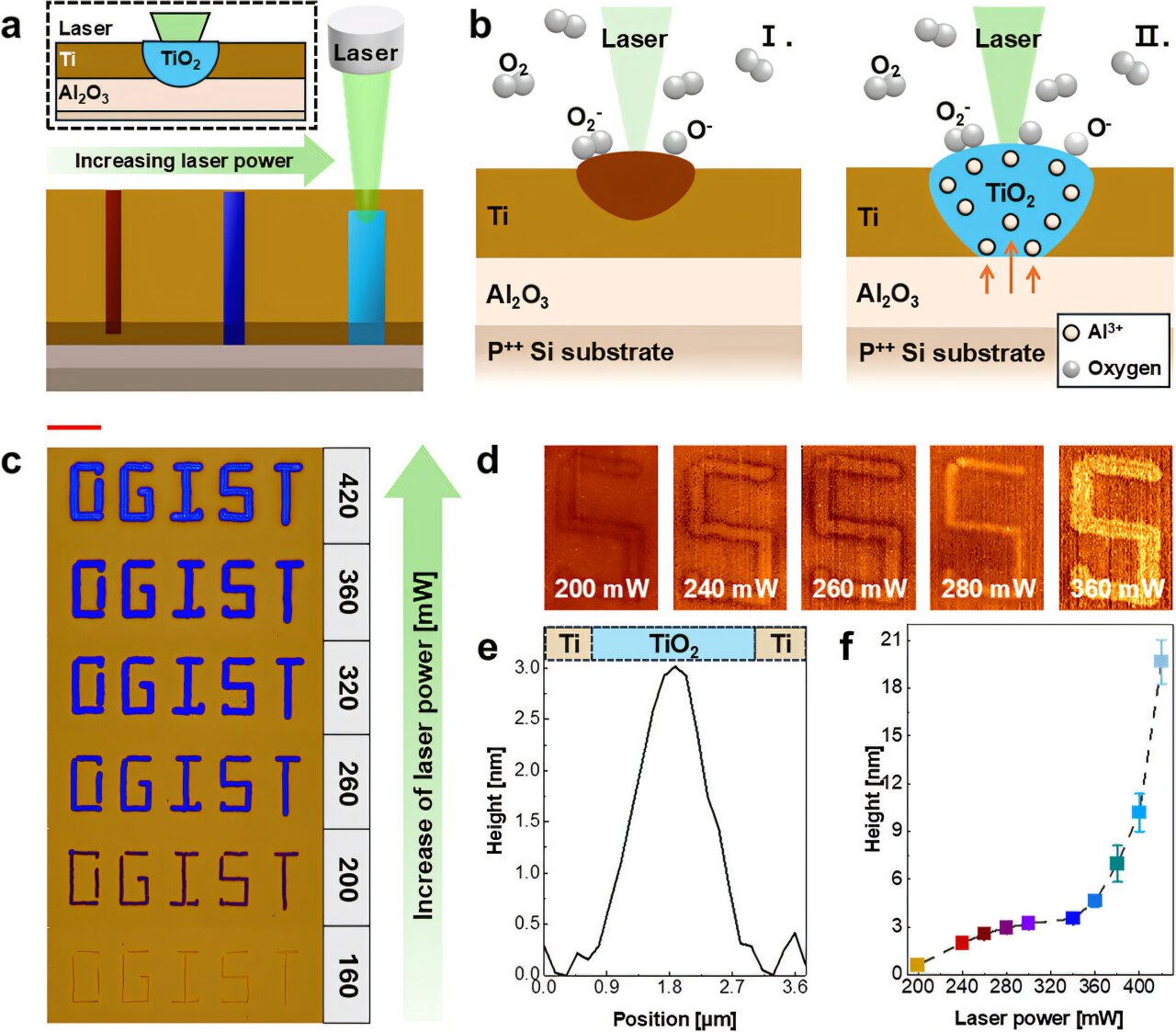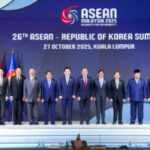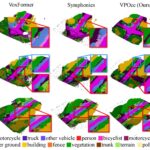
A research team has successfully developed a new technology that converts the conductivity properties of semiconductors with just one laser process.
The research team successfully converted titanium oxide (TiO2), which conventionally works based on electrons, into a hole-based p-type semiconductor. The Laser-Induced Oxidation and Doping Integration (LODI) technology developed by the research team can simultaneously execute oxidation and doping with just one laser irradiation, and it is noted as a novel conversion technology that can drastically streamline the traditional complex process.
The study is published in the journal Small. The team was led by Professor Hyukjun Kwon from the Department of Electrical Engineering and Computer Science, Daegu Gyeongbuk Institute of Science and Technology.
Semiconductors are categorized into two types (n- and p-types) based on the dominant particles that carry electric current. Negatively charged electrons (e-) move to carry current in n-type semiconductors, while holes (h⁺), which are empty spaces in electrons, move to carry current in p-type semiconductors. Most electronic devices, including smartphones and computers, run on complementary metal–oxide–semiconductor (CMOS) circuits that use both properties. Hence, both n- and p-types must be implemented in the design of efficient circuits.
Meanwhile, titanium oxide (TiO2) has been considered an “ideal semiconductor material,” as it is non-toxic, abundant, and thermally and chemically stable. However, its crystal structure is very stable, which restricts the movement of holes. Hence, it has only worked as an n-type semiconductor, which carries only electrons (e-). In short, the material shows good performance and stability but can only use “half the circuit.”
To tackle these limitations, the research team developed LODI. This technology is an integrated process that carries out oxidation and doping simultaneously with one laser and consolidates the complex semiconductor manufacturing process into a single step.
When a film of aluminum oxide (Al2O3) is placed on top of a thin metal film of titanium (Ti) and irradiated with a laser for a few seconds, aluminum ions diffuse inside as titanium combines with oxygen to convert into titanium oxide (TiO2). In this process, the balance of electrons is broken down, which creates holes and subsequently forms a p-type semiconductor in which holes, instead of electrons, carry current.
To convert titanium oxide semiconductors into the p-type, a complex process is required that takes tens of hours and includes high-temperature thermal treatment and vacuum ion implantation. It also requires expensive equipment and a high vacuum environment, which limits commercialization.
On the other hand, as LODI can achieve the same effect in a few seconds with just one laser, it is expected to become the next-gen semiconductor manufacturing technology that can perform oxidation, doping, and patterning simultaneously and dramatically shorten process time and cost.
“This study holds significance as it converts titanium oxide semiconductors, which have been mainly used in the n-type, to the p-type while streamlining the conventional complex process into a single laser process,” said Professor Hyukjun Kwon. “This original technology that can precisely control the conductivity type of oxide semiconductors will serve as a foundation for implementing next-gen highly integrated and reliable devices.”
More information:
Gyuwon Yang et al, One‐Step Laser‐Induced Oxidation and Doping for Tailored p‐Type Conversion of Al‐Doped TiO₂, Small (2025). DOI: 10.1002/smll.202502139
Small
Daegu Gyeongbuk Institute of Science and Technology
Citation:
Laser can transform complex semiconductor properties in single-step process (2025, October 27)
retrieved 27 October 2025
from https://techxplore.com/news/2025-10-laser-complex-semiconductor-properties.html
This document is subject to copyright. Apart from any fair dealing for the purpose of private study or research, no
part may be reproduced without the written permission. The content is provided for information purposes only.










